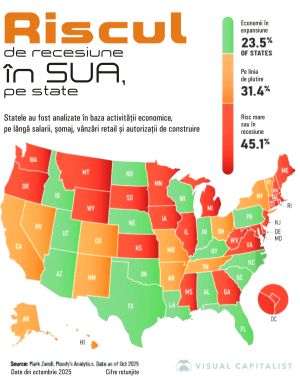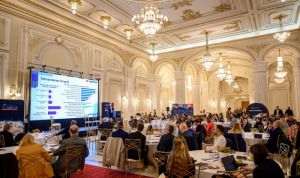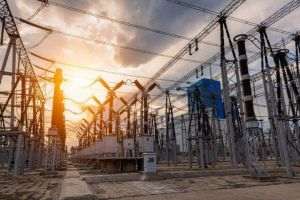
200 countries participated in COP 26 FROM 1ST TO 12TH November in Glasgow Scotland.
All the small developing nations requested money from the rich nations, which was predictable, but this misunderstands the issue which is that the rich countries need to spend more on their own emissions then the planet would cool and the poor countries problems would be solved. They must know this so its just another "give us money" game.
The problem fossil fuel is COAL. China is the biggest coal user, with India, the U.S.A. and Australia well behind. China emits 7 billion tonnes of CO2 each year from coal with India at 2 billion and the U.S.A. at 1 billion . The U.S.A. is the biggest emitter from OIL . The conference , under pressure from China and India, changed what they finally signed from "Phasing out" of coal to "Phasing down" as China,s economy is still expanding and one of the main issues of the climate activists is the world,s continued drive to increase their Gross Domestic Product every year.
There are 1.42 billion cars in the world emitting 2.23 billion metric tonnes of carbon dioxide into the atmosphere representing 7% of all the carbon dioxide emitted to the atmosphere.
Assuming that the cars that go out of use are the same as the number produced [this year 80 million ] then at the target date of 2030, when the U.K. proposes that all cars produced must be electric, there will still be 1.42 billion cars producing emissions for at least 10 to 15 years after that. So, it seems that President Mohdi of India was the most realistic leader when he said that his country would need until 2070 to reach net zero.
So, here is the dilemma at the heart of the problem. Scientists say that the current proposals which are being proposed at COP26 are like planning the outer defences of a castle when the invaders are already inside. What do we do ? Stop driving , stop flying close the factories . How do they propose to bring the public along with them in such a plan. The issue is more social [about behaviour] than economic . No-one is now disagreeing that the problem is fossil fuel emissions and that the problem is caused by mankind and his lifestyle.
My contention is that the main problem is time . In order to change the behaviour of the 8 billion people on the earth will require 50 years and all the experts say that is too late, by that time there will be massive floods , a huge increase in the desert areas and hundreds of cataclysmic weather events killing millions of people.
• Where is the Money ?
Brian Moynihan the CEO of the Bank of America gas stated that the $4 trillion required annually from 2026 to 2030 [to transition to a carbon-free economy by 2050] is "not that much money " NOT A LOT OF MONEY ! what does he mean After deducting for the investments no longer required in fossil fuel industries the Annual $4 trillion is about 1 to 2 per cent of global GDP which is in line with the investment in railroads in the 1850s , internet technology in the 1980s and housing in the mid 2000s , all of these were enthusiastically financed by Wall Street.
Moynihan argues that , if there is a revenue stream then the funding is infinite. This revenue will come from wind and solar farms, climate smart technologies and From small modular nuclear reactors being developed by Rolls Royce in the U.K. and NuScale in the U.S.A. like the one being built in Romania with U.S.A. finance.
Another source of funding which we have written about in an earlier article is a border tax on goods from countries with carbon heavy production processes which will be set at a duty percent to raise the price to the same level as prices in the countries using processes with low carbon content. Imagine the goods currently imported from countries with very low wage costs being taxed to equal prices that would result from higher wages costs in the country importing the goods.
Now, it is up to Mike Bloomberg [of Bloomberg information business] and Mark Carney former Governor of the Bank of England to advise governments and the financial sector how to create revenue streams to access the "infinite funding" that Brian Moynihan says is available.
The real success of COP26 was to raise the level of awareness throughout the world and to bring 200 countries together towards one goal , and to sign an agreements confirming the objectives of 1.5C global warming by 2030. Reminding ourselves of what the 1.5C number means -it means a global average temperature of 1.5C more than pre-industrial levels. "Pre-industrial" means before the industrial revolution of the 850s. One might say BACK TO THE FUTURE.
There are 98 months remaining to halve the global emissions to keep the world in Line to achieve the target to limit the temperature rise to 1.5%
There are 1.42 billion cars in the world emitting 2.23 billion metric tonnes of carbon dioxide into the atmosphere representing 7% of all the carbon dioxide emitted to the atmosphere.
Assuming that the cars that go out of use are the same as the number produced [this year 80 million ] then, at the target date of 2030, when the U.K. proposes that all cars produced must be electric, there will still be 1.42 billion cars producing emissions for at least 10 to 15 years after that.
So, it seems that President Mohdi of India was the most realistic leader when he said that his country would need until 2070 to reach net zero.
So, here is the dilemma at the heart of the problem. Scientists say that the current proposals which are being proposed at COP26 are like planning the outer defences of a castle when the invaders are already inside. What do we do ? Stop driving , stop flying close the factories . How do they propose to bring the public along with them in such a plan. The issue is more social [about behaviour] than economic . No-one is now disagreeing that the problem is fossil fuel emissions and that the problem is caused by mankind and his lifestyle.
My contention is that the main problem is time . In order to change the behaviour of the 8 billion people on the earth will require 50 years and all the experts say that is too late, by that time there will be massive floods , a huge increase in the desert areas and hundreds of cataclysmic weather events killing millions of people.
Can the 8 billion people in the world change lifestyles in time to save the planet ?



























































